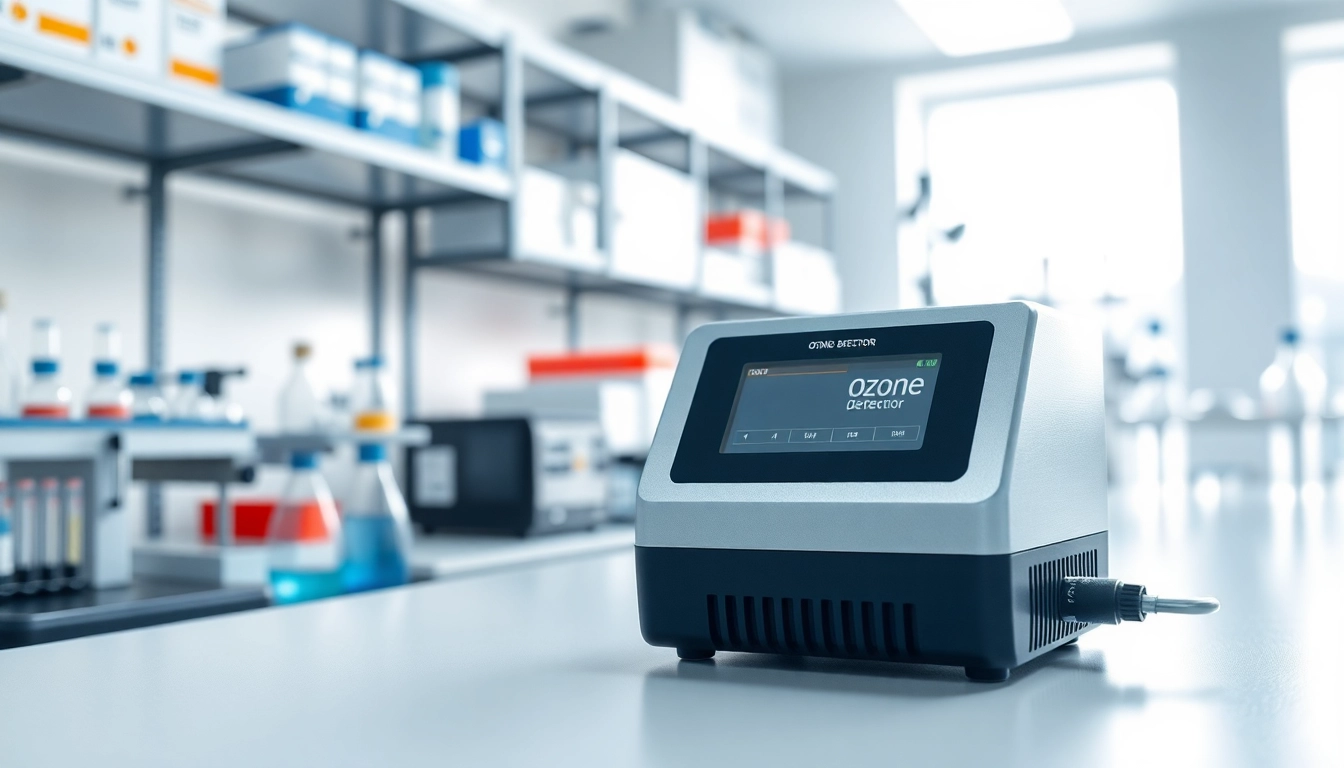Understanding Ozone Detectors
Ozone detectors are essential devices that monitor the concentration of ozone (O3) in the atmosphere. These detectors are increasingly gaining attention due to the rising concerns about air quality and the impact of ozone on both health and the environment. The importance of maintaining optimal levels of ozone cannot be overstated, given its role as a powerful oxidant and its association with various hazards, particularly in urban environments. For those seeking to enhance their air quality monitoring efforts, investing in a reliable ozone detector is indispensable.
What is an Ozone Detector?
An ozone detector is a device specifically designed to measure the concentration of ozone in the air. These detectors provide real-time data and alerts about ozone levels, enabling individuals and organizations to take appropriate action to mitigate exposure. The technology behind ozone detectors can vary, with different sensors employing various methods to accurately identify ozone concentrations, including electrochemical, UV photometry, and metal oxide semiconductor techniques.
How Ozone Detectors Work
Ozone detectors typically operate by utilizing a specific detection method tailored to measure the levels of ozone gas. There are several common approaches:
- Electrochemical Sensors: These employ a chemical reaction that generates a current proportional to the concentration of ozone present.
- UV Photometry: This method involves measuring the absorption of ultraviolet light by ozone, correlating the amount of light absorbed with ozone concentration.
- Metal Oxide Semiconductor Sensors: These change their electrical resistance in response to the presence of ozone, allowing for detection.
The choice of technology often depends on the application of the ozone detector, the required accuracy, and environmental conditions.
Importance of Ozone Detection
Ozone is not only a significant component of the Earth’s stratosphere, where it protects us from harmful UV radiation, but it also constitutes a harmful pollutant at ground level. Elevated levels of ozone can lead to serious health issues, including respiratory problems, diminished lung function, and cardiovascular diseases. Moreover, high ozone levels can damage crops, forests, and other vegetation. Therefore, ozone detectors play a crucial role in environmental monitoring and public health, enabling proactive measures to combat ozone pollution in urban areas.
Applications of Ozone Detectors
Industrial Uses of Ozone Detectors
Industries that utilize ozone, such as water treatment, food processing, and pharmaceutical manufacturing, require precise monitoring of ozone levels to ensure safety and compliance with regulations. For example, the water treatment industry relies heavily on ozone for disinfection processes. Ozone detectors in these settings are vital for maintaining the correct dosage and timing of ozone application, thus ensuring water quality and safety.
Environmental Monitoring and Ozone Detectors
Environmental agencies and organizations utilize ozone detectors for air quality monitoring programs. These detectors provide critical data that informs regulatory decisions and public advisories about air quality. In urban settings where ozone smog is prevalent, timely data from ozone detectors can signal residents about health risks, enabling them to limit outdoor activities during high ozone days.
Personal Safety with Ozone Detection
On a more personal level, ozone detectors are becoming increasingly popular for home use, especially in areas where ozone generators are used for air purification. Understanding the safe and harmful concentrations of ozone is essential for preventing negative health impacts. Personal ozone detectors ensure that levels in living spaces remain within acceptable limits, enhancing overall indoor air quality and safety.
Choosing the Right Ozone Detector
Key Features to Consider
When selecting an ozone detector, it is crucial to consider several features that affect performance and user experience:
- Detection Range: Choose a detector that can accurately measure the expected range of ozone levels in your environment.
- Response Time: A quick response time is essential for timely alerts, especially in industrial applications where ozone levels can fluctuate rapidly.
- Calibration: Look for detectors that can be easily calibrated to maintain accuracy over time.
- Data Logging Capabilities: Some detectors come with data logging features, allowing users to track ozone levels over time and analyze trends.
- Portability: For personal or field applications, weight and size may be crucial, making it essential to choose a lightweight and portable device.
Price Ranges and Budgeting
The price of ozone detectors can vary significantly based on features, accuracy, and application. Basic models can start at around $100, while more advanced industrial-grade detectors can exceed $1000. It is essential to assess your specific needs and budget when selecting a detector, ensuring that you invest in a model that offers a good balance between price and functionality.
Brand Comparison and Reviews
Before making a purchase, it is wise to research different brands and read user reviews. Leading manufacturers in the ozone detection industry include Aeroqual, Dräger, and Eco Sensors. Comparing the specifications, customer feedback, and warranty options provided by different brands can help ensure that you choose a reliable ozone detector that meets your needs.
Best Practices for Ozone Monitoring
Regular Maintenance of Ozone Detectors
To ensure accurate readings, regular maintenance of ozone detectors is crucial. This includes:
- Routine calibration based on the manufacturer’s recommendations.
- Regularly replacing filters and sensors as needed.
- Conducting functionality tests to verify detector performance.
Keeping your ozone detector in good working condition ensures reliable data and prolongs the life of the equipment.
Understanding Ozone Levels and Safety Limits
Understanding the recommended safety limits for ozone exposure is critical, particularly for vulnerable populations such as children and those with pre-existing health conditions. The World Health Organization (WHO) has set a guideline limit of 180 µg/m³ for short-term exposure (1 hour), while the U.S. Environmental Protection Agency (EPA) emphasizes the importance of maintaining lower levels during peak pollution times. Being aware of these limits will help you make informed decisions regarding outdoor activities during high ozone days.
Compliance with Environmental Regulations
Industries and organizations that deal with ozone are often required to comply with local and federal regulations regarding ozone emissions and air quality standards. Utilizing ozone detectors can help ensure compliance with these regulations, avoiding potential fines and contributing to better environmental stewardship.
The Future of Ozone Detection Technology
Innovations in Ozone Monitoring
The field of ozone detection technology is continuously evolving, with innovations aimed at improving accuracy, portability, and user-friendliness. Advances such as smart sensors that provide real-time data via mobile applications and enhanced algorithms that can distinguish between background ozone and spikes due to local pollution sources are paving the way for more effective monitoring solutions.
Integration with Smart Technologies
As homes and cities become increasingly interconnected through the Internet of Things (IoT), ozone detectors are also adapting. Future models are likely to integrate seamlessly with smart home systems, sending alerts directly to residents in real time. This capability could provide invaluable insights, enabling swift action in response to unsafe ozone levels.
Ozone Detection: A Growing Need in Urban Areas
As urban populations continue to rise, so does the need for effective air quality management. Urban areas are often subjected to higher levels of ozone pollution, necessitating the deployment of reliable ozone detection systems. Ongoing research and development in this field are aimed at making these technologies more accessible, informative, and easy to use, ensuring that everyone has the tools required to monitor and manage ozone levels effectively.







